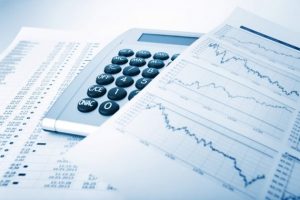
In the case of acquisition, it is the value of company sales minus any liabilities owed by the company not transferred with the sale. For example, different types and formats of income statement represents the amount of assets remaining after subtracting total liabilities from total assets on a company’s balance sheet. So, if a company had $2 million in assets and $1.2 million in liabilities, its stockholders’ equity would equal $800,000. Since equity accounts for total assets and total liabilities, cash and cash equivalents would only represent a small piece of a company’s financial picture. Any asset that is purchased through a secured loan is said to have equity. While the loan remains unpaid, the buyer does not fully own the asset.
At the center of everything we do is a strong commitment to independent research and sharing its profitable discoveries with investors. This dedication to giving investors a trading advantage led to the creation of our proven Zacks Rank stock-rating system. Since 1988 it has more than doubled the S&P 500 with an average gain of +24.26% per year. These returns cover a period from January 1, 1988 through July 3, 2023. Zacks Rank stock-rating system returns are computed monthly based on the beginning of the month and end of the month Zacks Rank stock prices plus any dividends received during that particular month. A simple, equally-weighted average return of all Zacks Rank stocks is calculated to determine the monthly return.
Shareholders’ Equity
Retained earnings is the cumulative amount of profits and losses generated by the business, less any distributions to shareholders. When examined along with these other benchmarks, the stockholders’ equity can help you formulate a complete picture of the company and make a wise investment decision. Examining the return on equity of a company over several years shows the trend in earnings growth of a company. For example, if a company reports a return on equity of 12% for several years, it is a good indication that it can continue to reinvest and grow 12% into the future. Treasury stocks are repurchased shares of the company that are held for potential resale to investors.
Equity is important because it represents the value of an investor’s stake in a company, represented by the proportion of its shares. Owning stock in a company gives shareholders the potential for capital gains and dividends. Owning equity will also give shareholders the right to vote on corporate actions and elections for the board of directors.
Earned Capital from profits in the business accumulate in an account called Retained Earnings. Cash takes up a large portion of the balance sheet, but cash is actually not considered an asset because it is expected that cash will be spent soon after it comes into the business. Stockholders’ equity is important for a company because it demonstrates the amount of money that would be available to either pay off liabilities or reinvest in the business. For example, if a company has assets of $15,000 and liabilities of $10,000, its stockholders’ equity would be $5,000. Retained earnings grow in value as long as the company is not distributing them to shareholders and only investing them back into the business.
Stockholders’ Equity FAQs
Paid-in capital also referred to as stockholders’ funds, is the amount of money that people have invested in a company. However, that shareholder equity is not the same as liquidation value. Physical asset values are reduced during liquidation, and other unusual conditions exist. This is because years of retained earnings could be used for expenses or any asset to help the business grow. However, it’s important to remember that it is influenced by factors the company can control, such as dividends paid.

Although the level of risk influences many investment decisions we are willing to take, we cannot ignore all the critical components discussed above. Is the most widely used formula to calculate the stockholder’s equity. Common stock is the par value of common stock, which is usually $1 or less per share. A number of accounts comprise stockholders’ equity, which are noted below. Stash101 is not an investment adviser and is distinct from Stash RIA. Successful investors look well beyond today’s stock price or this year’s price movement when they consider whether to buy or sell.
What is Shareholders’ Equity?
Sometimes, a venture capitalist will take a seat on the board of directors for its portfolio companies, ensuring an active role in guiding the company. Venture capitalists look to hit big early on and exit investments within five to seven years. An LBO is one of the most common types of private equity financing and might occur as a company matures. In addition, shareholder equity can represent the book value of a company. The fact that retained earnings haven’t been distributed doesn’t mean they’re necessarily still available to be distributed.
What remains after deducting total liabilities from the total assets is the value that shareholders would get if the assets were liquidated and all debts were paid up. The difference between a company’s total assets and total liabilities is referred to as shareholder equity. Because all relevant information can be obtained from the balance sheet, this equation is known as a balance sheet equation. Private equity is often sold to funds and investors that specialize in direct investments in private companies or that engage in leveraged buyouts (LBOs) of public companies. In an LBO transaction, a company receives a loan from a private equity firm to fund the acquisition of a division of another company.
Why Is It Important for a Company to Have Enough Stockholders’ Equity?
Understanding the formula’s constituent partsTotal assets are the sum of all current and non-current (long-term) balance-sheet assets. Cash, cash equivalents, land, machinery, inventory, accounts receivable, and other assets are examples of assets. The value of $65.339 billion in shareholders’ equity represents the amount left for shareholders if Apple liquidated all of its assets and paid off all of its liabilities. Shareholders’ equity is, therefore, essentially the net worth of a corporation.
MeridianLink Reports Second Quarter 2023 Results National … – Joplin Globe
MeridianLink Reports Second Quarter 2023 Results National ….
Posted: Tue, 01 Aug 2023 20:02:48 GMT [source]
Current assets are those that can be converted to cash within a year, such as accounts receivable and inventory. Long-term assets are those that cannot be converted to cash or consumed within a year, such as real estate properties, manufacturing plants, equipment, and intangible items like patents. With various debt and equity instruments in mind, we can apply this knowledge to our own personal investment decisions. Although many investment decisions depend on the level of risk we want to undertake, we cannot neglect all the key components covered above. Bonds are contractual liabilities where annual payments are guaranteed unless the issuer defaults, while dividend payments from owning shares are discretionary and not fixed.
How does the balance sheet show the amount of stockholders’ equity?
Every company has an equity position based on the difference between the value of its assets and its liabilities. A company’s share price is often considered to be a representation of a firm’s equity position. The value of $65.34 billion in shareholders’ equity represents the amount left for stockholders if Apple liquidated all of its assets and paid off all of its liabilities. Looking at the same period one year earlier, we can see that the year-over-year (YOY) change in equity was a decrease of $25.15 billion. Retained earnings are a company’s net income from operations and other business activities retained by the company as additional equity capital.
- Stockholders’ equity is the value of a company’s assets that remain after subtracting liabilities and is located on the balance sheet and the statement of stockholders’ equity.
- A final type of private equity is a Private Investment in a Public Company (PIPE).
- If the value of all assets exceeds the value of all liabilities, the equity is positive and indicates a thriving business.
- It is a value that primarily provides investors with an overview of potential financial risks that the company may face.
If the value is negative, the company does not have enough assets to cover all its liabilities, which investors frequently regard as a red flag. There is no such formula for a nonprofit entity, since it has no shareholders. Instead, the equivalent classification in the balance sheet of a nonprofit is called “net assets.” Home equity is roughly comparable to the value contained in homeownership. The amount of equity one has in their residence represents how much of the home they own outright by subtracting from the mortgage debt owed.
How Do You Calculate Shareholders’ Equity?
Shareholder equity alone is not a definitive indicator of a company’s financial health. This is an account on a company’s balance sheet that consists of the cumulative amount of retained earnings, contributed capital, and occasionally other comprehensive income. The difference between total assets and total liabilities on the stockholders’ equity statement is usually measured monthly, quarterly, or annually. It can be found on the balance sheet, one of three essential financial documents for all small businesses. Positive shareholder equity indicates that the company’s assets exceed its liabilities, whereas negative shareholder equity suggests that its liabilities exceed its assets. This is cause for concern because it marks the value of a company after investors and stockholders have been paid.
BlueLinx Announces Second Quarter 2023 Results – GlobeNewswire
BlueLinx Announces Second Quarter 2023 Results.
Posted: Tue, 01 Aug 2023 20:10:08 GMT [source]
Stockholders’ equity is also referred to as shareholders’ or owners’ equity. Stockholders’ Equity is $2,000 [$10,000 in Assets minus $8,000 in Liabilities]. Stockholders’ Equity is equal to the amount of assets over and above the amount owed on those assets. We follow strict ethical journalism practices, which includes presenting unbiased information and citing reliable, attributed resources.
